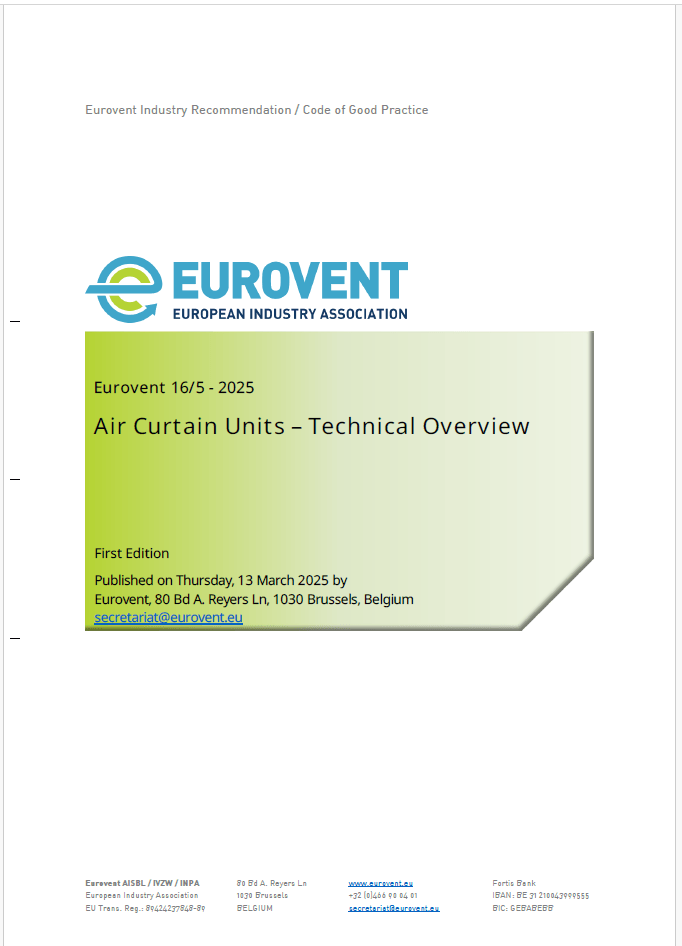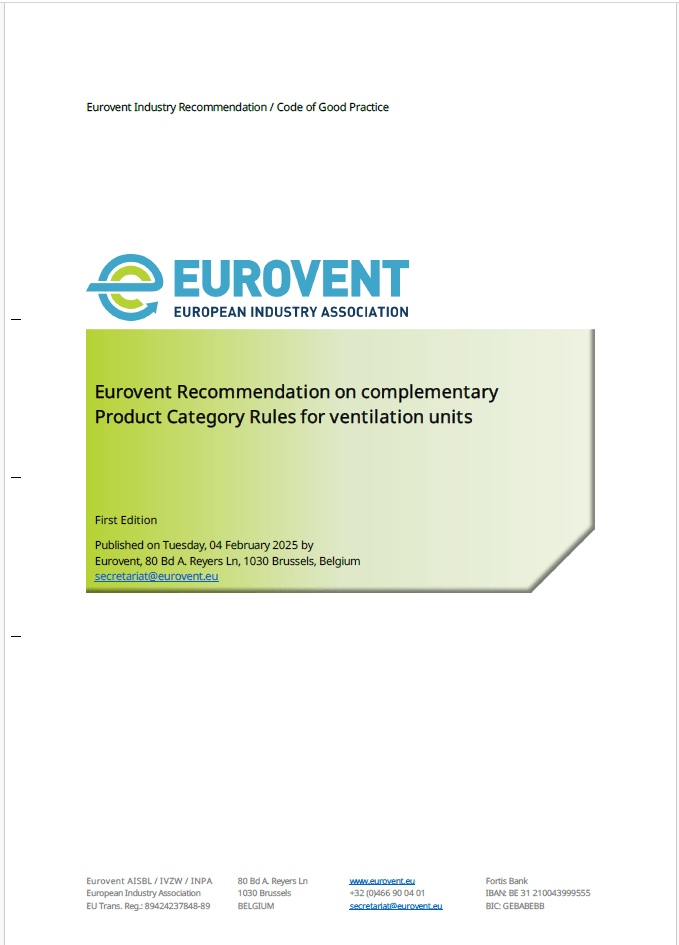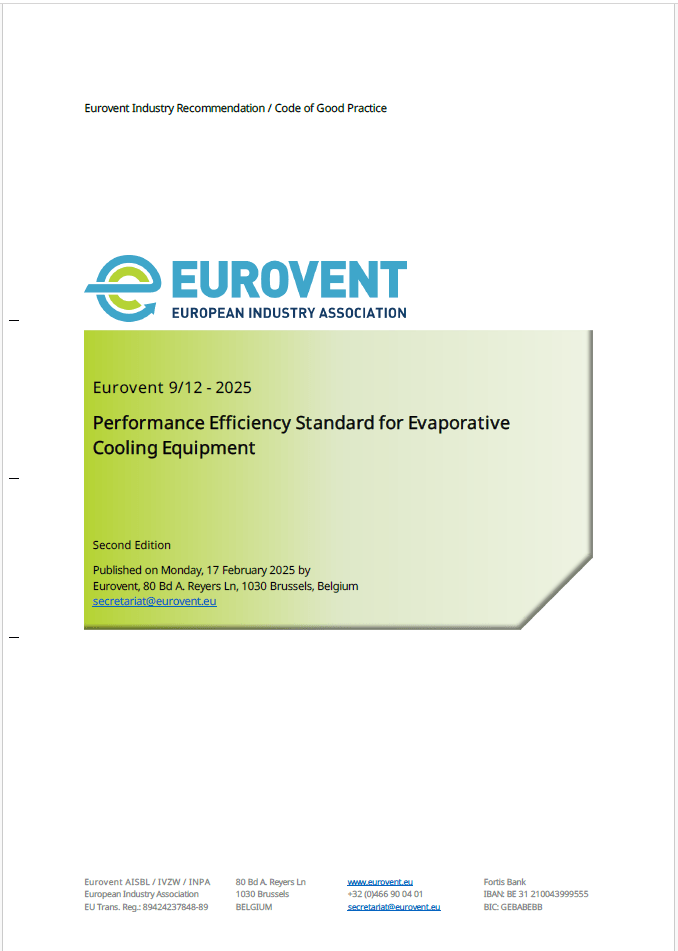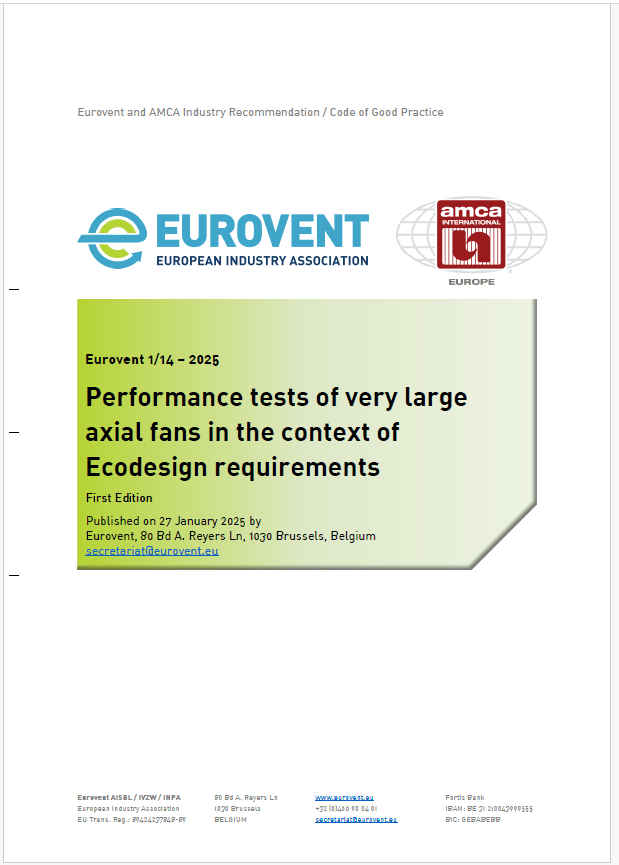The Eurovent ‘Energy Efficiency Evaluation of Air Filters for General Ventilation Purposes’ is a valuable, effective, yet largely underutilised tool, especially in projects across the Middle East. Here is how the guideline can unlock better energy saving, more sustainable operations and ensure greater quality of health.
The undeniable savings of energy-efficient filters
 The energy savings that can be unlocked with more efficient filters have long been proven. Providing numbers to back this claim, Stephane Ruiz, Managing Director, Camfil Middle East, shares that generally, for commercial buildings, 50% of the energy bill is related to the HVAC system and 30% of this cost is roughly linked to the air filters. “Using energy-efficient filters will usually provide a +20% of energy savings,” he says.
The energy savings that can be unlocked with more efficient filters have long been proven. Providing numbers to back this claim, Stephane Ruiz, Managing Director, Camfil Middle East, shares that generally, for commercial buildings, 50% of the energy bill is related to the HVAC system and 30% of this cost is roughly linked to the air filters. “Using energy-efficient filters will usually provide a +20% of energy savings,” he says.

Sami Akaydin, Technical Manager, TROX Middle East, agrees, further explaining that investing in quality energy-efficient filters essentially means investing in filters that offer less resistance than standard filters. “Filters are supposed to separate particles in the air – and they are an obstacle to the airflow,” he says. “As the differential pressure increases, the energy efficiency decreases. The goal is minimising the loss.” He further explained that filter media with extremely fine pleats and aerodynamically optimised filter units could help to save up to 50% energy compared to conventional filters.
IAQ and other benefits
In addition to achieving energy savings, high-quality filters also improve the overall efficiency of HVAC systems and ensure the systems’ cleanliness while reducing the associated maintenance costs, says Ruiz. “HVAC’s component lifespan will be extended with quality air filters,” he says. “Furthermore, high-quality filters do not need to be replaced as often as lower quality filters, which result in less waste disposal and lower maintenance costs.”
However, the benefits of quality filters on occupant health are perhaps of the most significant concern for those who advocate for using quality air filters. “Effective and highly efficient filter systems filter dust, bacteria and pollen out of the ambient air, ensuring that we can breathe clean air in enclosed indoor spaces,” Akaydin says. “Alongside the system efficiency factor, the air quality achieved by the air handling unit system is increasingly becoming an important focal point for regulatory bodies worldwide.” Ruiz reiterated this by saying, “The aim is to protect people by reducing sick leave, increasing their productivity and ensuring wellbeing at the same time.”
The increasing focus on the importance of thermal comfort and room air quality among legislators could also be traced to proven economic benefits, Akaydin adds, pointing to the work of William J. Fisk, ‘Health and Productivity Gains from Better Indoor Environments’. The report, he explains, demonstrated the economic returns of good indoor environmental quality, such as a 20-50% reduction in sick building syndrome, saving between 10 and 100 bn USD; 8 to 25% fewer asthma-related absences, saving 1-4 bn USD; 23-76% reduction in respiratory diseases, saving 6-14 bn USD and productivity increases of 0,5-5% for office workers, generating gains of 20-200 bn USD.
A valuable yet underutilised tool
Given the holistic benefits of quality air filters, consultants and project owners must choose the most optimum filters for their respective facilities. This may not always be straightforward, given that each project is different, and many solutions are available in the market. “Filters look the same from the outside, but the way they behave from one to another can present many differences,” says Ruiz. “It is crucial for consultants to understand the effect and benefits of the filters on the HVAC system, and its impact on sustainability, energy use, waste disposal and occupant health.”
Eurovent offers excellent guidance for consultants and project owners to navigate the thin line between energy efficiency and filtration requirements. The ‘Eurovent Recommendation 4/23 – 2022: Selection of EN ISO 16890 rated air filter classes’ provides clarity on implementing the newest global standard on air filtration, while ‘The Energy Efficiency Evaluation of Air Filters for General Ventilation’ gives a good understanding of how the filters perform but also will point out some technical differences between several filters.” says Ruiz.
Eurovent Certification tests and certifies air filters according to their filtration and energy consumption characteristics and provides an energy label that helps consumers make the best choice. It is based on ISO 16890-1:2016 and is a third-party certification providing information such as pressure drop, ePM efficiency, energy rating and annual energy consumption. This is crucial to understand the saving potential of filters without reducing the filtration efficiencies.
Providing an example, Ruiz says, “If we look at a standard ePM1 60% filter that is B rated, with an energy consumption of 1054kWh/a and compare it to the same efficiency filter that is A+ rated with an energy consumption of 811kWh/a. By simply switching filters, a company can save over 240kWh/a per filter.” Compared to lower classes, the energy saving outnumbers the higher investment costs, usually within few months, significantly reducing operational costs.
What the guideline has to offer
Akaydin adds that the tool is especially valuable considering the standard testing procedure for large and fine dust filters has changed. “Filter performance is now no longer assessed based solely on a laboratory test method but on real application conditions,” he says. “Previously, in accordance with EN 779, a synthetic aerosol was used for testing, with a standard particle size of 0,4 µm. The new ISO 16890 standard is based on a range of particle fractions, and tests are conducted using DEHS and KCl test aerosols.”
Under the evaluation, Akaydin explains that filters are divided into four groups:
- ISO Coarse (rated containment capacity against ISO A2 dust)
- ISO PM10: Fine dust particles ≤ 10 µm
- ISO PM2.5: Fine dust particles ≤ 2.5 µm
- ISO PM1: Fine dust particles ≤ 1 µm
- Filter performance is now measured with three different particle fractions (PM1, PM2.5, PM10).
“This test scenario allows the tester to examine the local fine dust pollution more closely, based on data from official measuring stations, for example, and to select a filter appropriate for the quality of the supply air,” he says.
Akaydin adds that alongside the filter performance, another important aspect to consider is the energy performance of the filter in day-to-day use. “The outdoor air (ODA) quality requirements have also been redefined,” he says. “The categories ODA 1 to ODA 3 must now be determined based on loading with O-zone, NO2, SO2 and PM10, in accordance with the revised regulations published by the WHO in 2005 (superseding 1999 version). These categories are important in determining which air filter should be fitted in the AHU. The definition of supply air (SUP) quality, divided into five categories, has also been added to the standard.”
Akaydin also says the New Energy Efficiency Classification table from Eurovent, which shows kWh annual energy consumption (AEC) based on standard test conditions, is very beneficial for projects. “Air filters of the lowest energy efficiency Class E consume more than twice as much energy as the best Class A+ filters,” he says.
Providing an example, filter of category ePM1 > 50% (previously F7) could give both results below depending on the different efficiencies:
- One piece Class A+ filter that consumes up to 800 kWh incurs energy costs of 328 AED per year.
- One piece Class D filter that consumes up to 2.000 kWh incurs energy costs of 820 AED per year. (Considered commercial rate per kWh of 0,41 AED in the UAE)
The difference in energy costs, therefore, is 492 AED at a volume flow rate of 3,400 m3/h, ensuring 60% is saved per year per filter. “Filters are more than just an investment in room air quality – they are an investment in efficiency, too,” he adds.
A critical tool for the Middle East
While an effective and advantageous tool, experts believe the guideline remains underutilised in the Middle East. “We are living in a beautiful region which is close to the desert, but, unfortunately, this brings its challenges, such as a cocktail of sand and wind, which is not so good for our lungs,” says Ruiz. “Indoor air quality can even be worse than the outside air quality, and looking at the outdoor dust concentration values in UAE, we can imagine why efficient air filters are so important.”
However, Ruiz says, quite often in the region, the selection and procurement of air filters are made on the acquisition cost and not based on a Total Cost of Ownership vision and strategy, “Projects driven by multinationals usually involve strong requirements when it comes to the air filtration part, mainly because these companies refer to their internal guidelines and processes,” he says. “For them, Energy Efficient Filters have many benefits for their facilities, processes, and people, and they understood this principle a long time ago.”
Akaydin is optimistic that awareness on the importance of investing in quality filters will grow as the world becomes more conscientious of energy use. “Indeed, high-quality, efficient filters are not being used as they should be,” he says. “However, we expect an increase in demand as energy efficiency initiatives are becoming an essential part of government strategies worldwide as part of efforts to promote sustainability. The UAE’s vision to be a global hub and a successful model of the new green economy is just one such example.”
The silent killer
Ruiz adds that even among consultants and property developers in the regions, efficient air filters, in terms of both energy and particulate matter, should be considered the key to sustainability. “Protecting people’s health and the next generation, making energy savings and generating less waste should be one of their priorities,” he says. “The COVID situation reminds us also how important it is to protect ourselves from airborne contamination.”
As a final word, Ruiz offers a crucial reminder of air quality’s massive impact on human health. “According to World Health Organization (WHO), more than 6.5 million people worldwide are dying prematurely each year due to air quality,” he says. “It is one of the major human threats, which was classified in 2013 as carcinogenic by the International Agency for Research on Cancer, and unfortunately, we are not focusing enough on it. I think it is not easy to understand and speak of something we cannot see. Air contamination is a silent killer that needs to be higher up on decision-makers agenda today.”



















